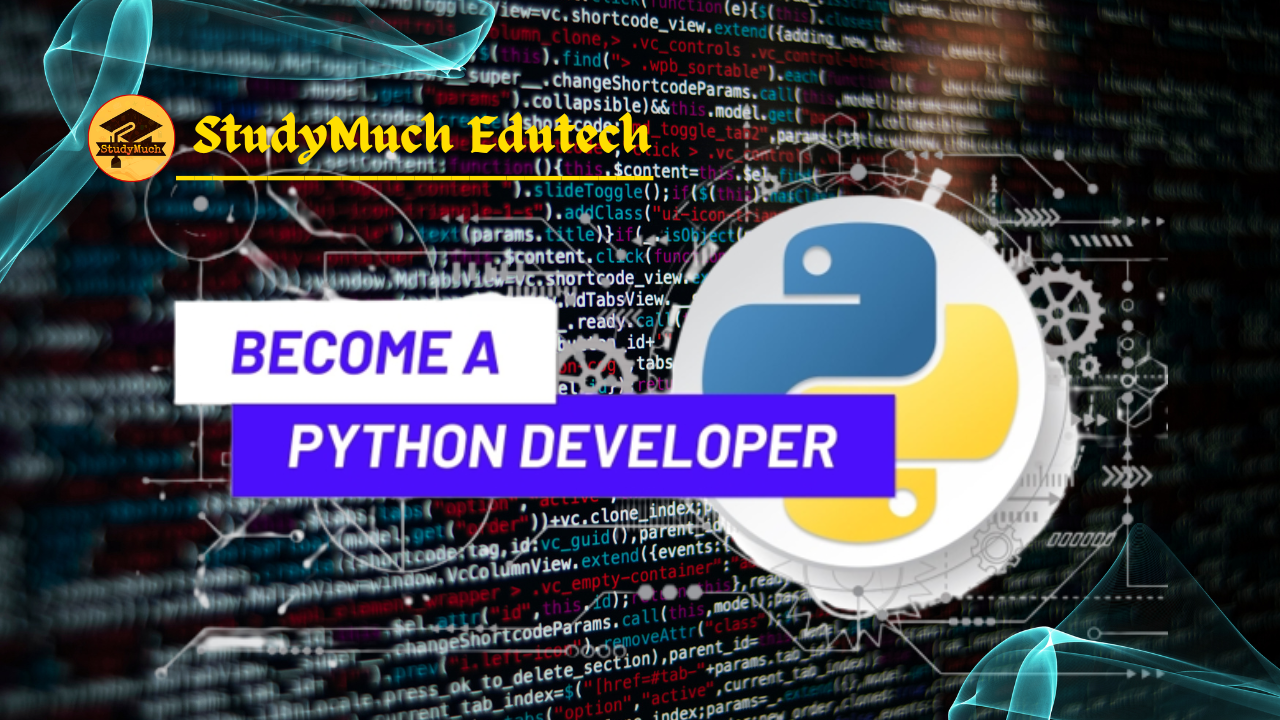Guide to Becoming a Python Developer

The Comprehensive Guide to Becoming a Python Developer
Python, often called one of the most versatile and beginner-friendly programming languages, has gained immense popularity in recent years. Its clean and readable syntax, along with a vast ecosystem of libraries and frameworks, makes it a great choice for both developers new to programming and experienced developers. In this guide, we will Guide to Becoming a Python Developer.

Step 1: Learn the Basics
1.1 Understanding Python syntax
Python is renowned for its readability, making it a great starting point for beginners. Key concepts include variables, data types, operators, and control structures (if statements, loops). Here is a simple example:
# Hello! print("Hello, StudyMuch!")
1.2 Data Structures
Python offers various built-in data structures like lists, tuples, dictionaries, and sets. Understanding these structures and their manipulation is essential.
# Lists fruits = ['apple', 'banana', 'cherry'] print(fruits[1]) # Output: banana # Dictionaries person = {'name': 'Shubham', 'age': 21} print(person['name']) # Output: Shubham
1.3 Functions
Functions are blocks of reusable code. Learning how to define and call functions is crucial.
def greet(name): print(f"Hello, {name}!") greet('Alice') # Output: Hello, Alice!
Step 2: Object-Oriented Programming (OOP)
Python supports object-oriented programming. Learn how to create classes and objects, encapsulate data, and define methods.
class Dog: def __init__(self, name, breed): self.name = name self.breed = breed def bark(self): return "Woof!" my_dog = Dog('Buddy', 'Golden Retriever') print(my_dog.bark()) # Output: Woof!
Step 3: Python Libraries
Python’s strength lies in its rich library ecosystem. Familiarize yourself with these libraries:
3.1. NumPy
NumPy is for numerical computing. It offers support for large, multi-dimensional arrays and matrices, along with a variety of high-level mathematical functions.
3.2. Pandas
Pandas is a data manipulation and analysis library. It provides data structures like DataFrames and Series, ideal for data processing tasks.
3.3. Matplotlib
Matplotlib is the go-to library for creating static, animated, or interactive visualizations in Python.
3.4. Flask/Django
These are popular Python web frameworks. Flask is lightweight and easy to get started with, while Django is a more comprehensive framework.
3.5. Requests
The Requests library
simplifies HTTP requests, making it effortless to work with web APIs.
Step 4: Databases
Learn how to interact with databases using libraries like SQLAlchemy and Django ORM. Understanding SQL is crucial for database interactions.
# Using SQLAlchemy from sqlalchemy import create_engine engine = create_engine('sqlite:///:memory:')
Step 5: Working with APIs
In a connected world, understanding how to work with APIs is vital. Python’s Requests library is helpful, and you should know how to make GET and POST requests.
import requests response = requests.get('https://api.example.com/data') data = response.json()
Step 6: Version Control
Master version control systems like Git. Platforms like GitHub and GitLab are essential for collaborating on projects.
Step 7: Testing and Debugging
Learn how to write and run tests using frameworks like pytest. Understand debugging techniques to find and fix issues efficiently.
# Example using pytest def add(x, y): return x + y def test_add(): assert add(2, 3) == 5
Step 8: Best Practices
Follow Python best practices, including PEP 8 (Python Enhancement Proposal 8) for code style and structure. Document your code using docstrings and comments.
Step 9: Projects and Portfolio
Build personal projects to apply your knowledge. Consider creating a portfolio showcasing your work. It’s an invaluable asset when seeking employment.
Step 10: Continuous Learning
Python is an ever-evolving language. Stay up-to-date with the latest trends, libraries, and best practices.
Conclusion
Becoming a Python developer is an exciting journey. The language’s simplicity and versatility make it a fantastic choice for both beginners and seasoned developers. By following this comprehensive guide and continually practicing your skills, you’ll be well on your way to mastering Python and building great applications. Happy coding!
Learn More;



0 Comments